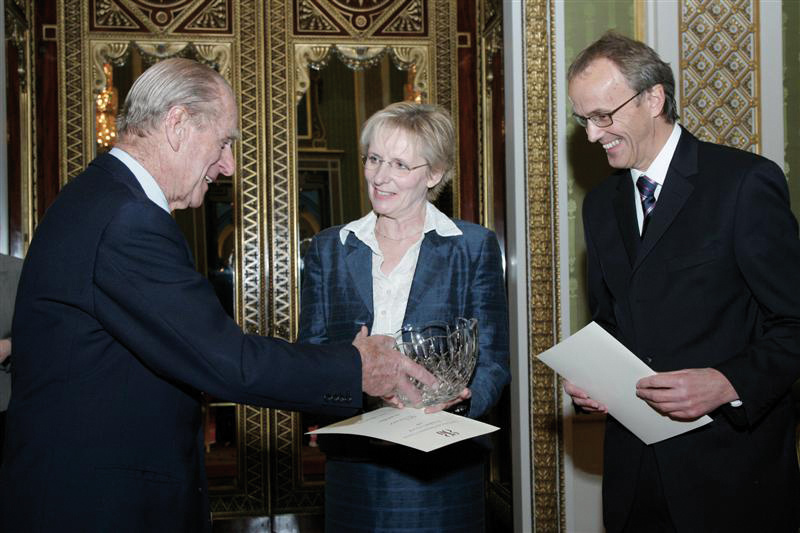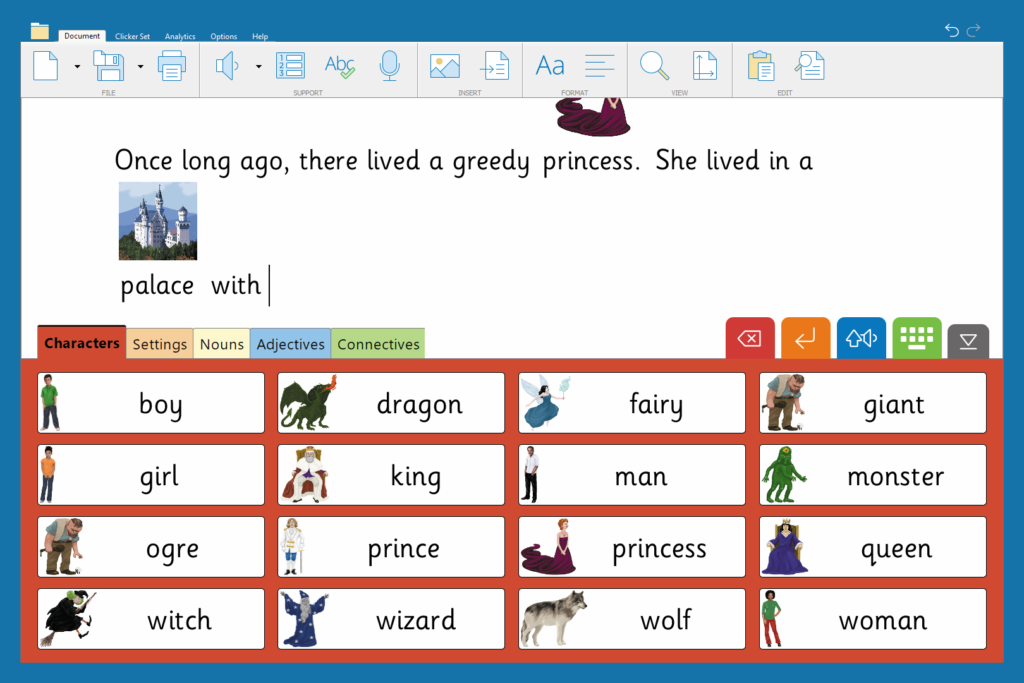
It’s hard to believe, but the very first iteration of Clicker was launched 26 years ago. How far we’ve come!
The idea for Clicker came to me in the early 1990’s when I was working in a special school for children with physical disabilities. These new things called ‘computers’ had begun to appear, and we started exploring how we could use this new technology to help our kids. It was a really exciting time; getting children connected up with trackerballs and switches, creating new output opportunities for them – it was just wonderful.
We wanted to get them progressing with their literacy and language development, but there wasn’t anything around that could give kids access to writing, and in terms of putting sentences together, it would take them way too long to do this letter by letter – they wouldn’t be able to sustain the use of the switches for that long.
I started formulating this idea… wouldn’t it be great if you could have an application where you’d have a grid with words that would go into a word processor when you selected them, that was scannable, and that enabled the teacher to tailor it instantly without having to go into some complicated editor. Twelve months of hard work and a lot of 2am programming sessions later, Clicker was born!
Universal design
When I started testing it, my wife Ann (also a teacher) came in and looked at what I was doing, clicking on words and sending them into the word processor, listening to them speak and so on, and she said that this would be a fantastic tool for the kids she was working with, to help them with their writing.

At that point, the light bulb lit up… we sat down together and said, wow, what we’ve got here is something that isn’t just a very specialist tool for switch-users, as important as that function is, but something that could help every child become a better, more confident writer. In a sense, we stumbled upon universal design by accident, before it even became part of our terminology! You think about supporting the least able users and you suddenly realise – oh, this is actually better for everybody.
After that, Ann and I started working on Clicker full-time, and seven versions, 10 language translations and eight BETT Awards later, Clicker is being used to support young writers in thousands of schools around the world.
Building a brand
As new devices came into schools, our product offering expanded, including our range of Clicker Apps for iPad and Chromebook. We are constantly adapting and keeping an eye on that ever-changing education horizon, whilst always staying true to the essence of what Clicker is, and the impact it has on teaching and learning.
’This is what it’s all about for us: opening up new learning doors for students and giving everybody the same opportunities to progress and achieve. And every year, we’re very excited to help a whole new generation of learners to discover Clicker and experience those same feelings of pride, success, and inclusion.
Clicker in 2020…
Crick Software has launched two major Clicker updates for 2020 – Clicker 8 for Windows/Mac and Clicker Writer for iPad/Chromebook. Having supported thousands of schools around the world with free access to Clicker during the COVID-19 school closures, Crick is now focussing on showing teachers how Clicker can be used to bridge potential learning gaps and support blended learning strategies this year. Find out more by signing up for one of Crick’s free Clicker webinars this term.
Register for free
No Credit Card required
- Register for free
- Free TeachingTimes Report every month